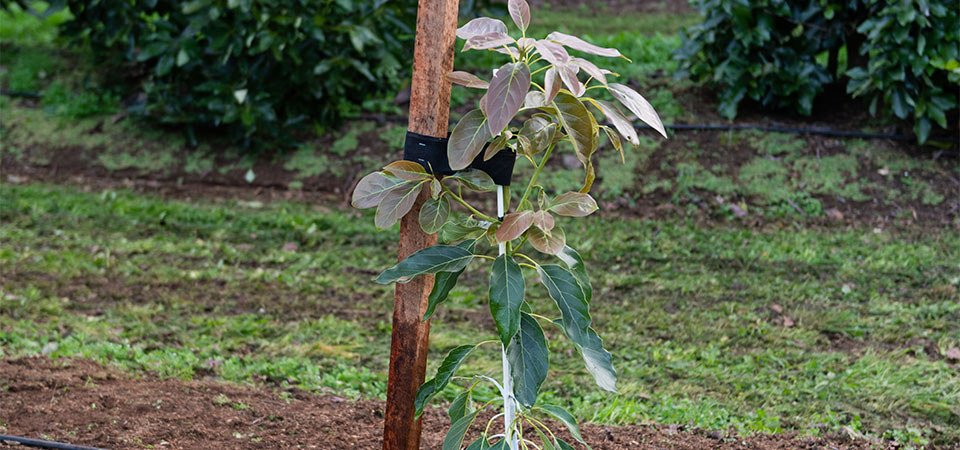
Home Gardeners FAQs
What are the best conditions for growing avocados?
The three most important things needed are:
1.Free draining soils. There are many soils which satisfy this from sandy soils, to volcanic clays, to ash and many in between. If in doubt, dig a hole 600mm deep, fill with water and ensure it is empty within 12 hours.
2.Temperature. Nowhere in New Zealand is too hot but many locations which are too cold. If you get temperatures below minus one, then it is going to be difficult to get trees established. Young trees need to be well sheltered.
3.Water. New Zealand is one of the few countries in the world where there is commercial growing without irrigation. However, in a drought trees will struggle and do much better with a timely drink.
There are many different rootstocks - which is best for me?
Rootstocks need to be divided into seedling rootstocks (grown from a seed and then grafted), and clonal rootstocks (grown from a cutting and then grafted). We try and match the correct rootstock for different sites and soil conditions, so it is worth contacting our sales team who can advise. Please be aware that most clonal rootstocks are protected plant material, so are only available to members of NZ Avocado
Do I need different varieties for cross pollination?
Different varieties in a cold spring is definitely an advantage. However, in a ‘normal’ spring, avocados are predominantly self- fertile. So, if you are planting an orchard, we recommend 11% ‘B’ type flowers. If you are planting three or four trees, it is well worth planting at least two varieties, but you can successfully plant a single tree and expect to get fruit most years.
How big do avocado trees grow?
Left to their own devices’ trees can get to 15 metres tall. There are some claims of dwarfed avocados but I have never seen a successful one. Tree size can be controlled with pruning.
When is the best time to plant?
This depends on where you are and what access you have to water. Firstly, avocados like to be planted into a warm soil, so in much of the country that would mean from October through until early autumn. If you still get frost in October, then delay until the possibility of one has passed. As soils dry out you will need to water/mulch to maintain a reasonable soil moisture. (DO NOT over water). We have growers planting from September to May, so keep to the above principles and find what works for your situation.
Should I prune my trees?
Avocados, like most trees like to be pruned. It helps maintain trees to the desired size and also helps them maintain youthful vigour. It’s important not to cut off all of next years flowering wood, so make one or two big cuts rather than many cuts right around the tree.
What fertiliser should I use?
With the oil content in the fruit being very high it takes a lot of nutrients to grow avocados. We recommend fertilising little and often with a high nitrogen fertiliser. Perhaps an application every six to eight weeks through spring and summer. Use a product with an NPK analysis of roughly 12-4-12. Animal manures can be quite effective as they release slowly, but ensure they are well composted otherwise root burning could be an issue
Should I mulch my trees?
Mulch is great for avocados. Ensure it is well composted to avoid nitrogen draw down. Most organic material will work, but avoid materials like lawn clippings as this may suffocate trees. Ensure the mulch is not touching the trunks of young trees as this can cause stem rots.
How long will it take for my trees to fruit?
You can expect some fruit in year three. As the trees grows, the number of fruit will grow!
How much water should I give my trees?
Far more damage is done over watering than under watering. Water deeply, but no more than once a week.
Should I stake my young trees?
You need to avoid any root damage to your trees so a stake to avoid too much tree swaying is vital. Remember to check any stake ties that may strangle the trees as they grow.
Why should I buy a grafted tree from a nursery rather than growing my own tree from a seed at home?
Because the tree is grafted, we know the genetics, so we can predict how the tree is going to behave. A tree grown from seed may take thirty years to fruit, or may never fruit at all.
Do I need to spray for pests and diseases?
The pests to worry about are those ones that feed on the leaves and therefore weaken the tree. The main ones are Six Spotted Mites and Fullers Rose Weevil. If you want your fruit to look great you will also need to control Leafroller Caterpillar and Thrip. Your garden centre will have options to control these pests.
Where can I buy a dwarf avocado tree?
There is no such thing as a dwarf avocado tree (despite claims being made by some). Currently, pruning is the best technique we have to control vigour.
